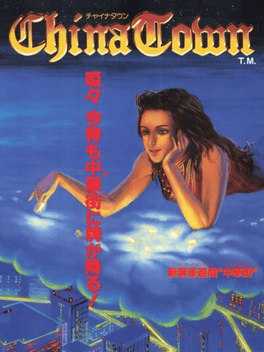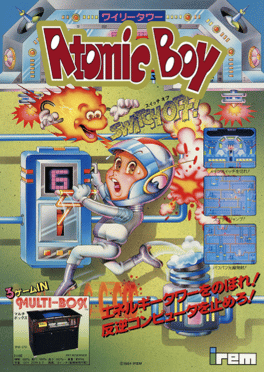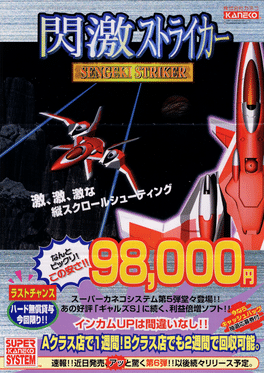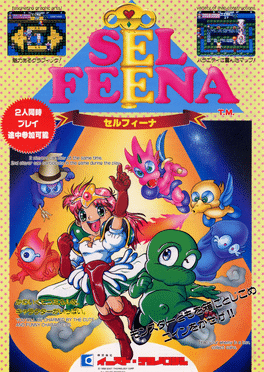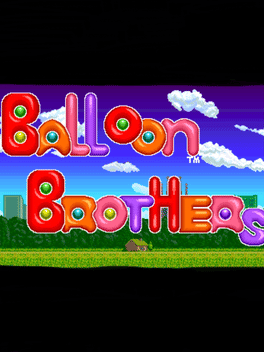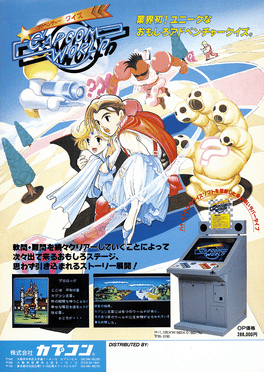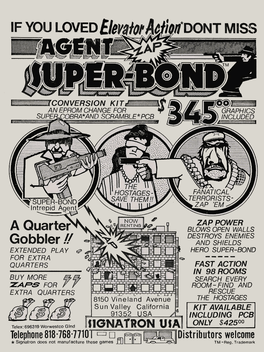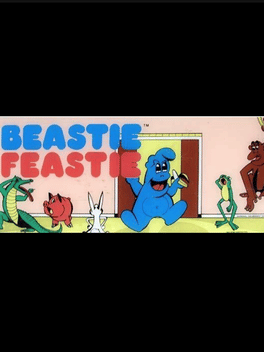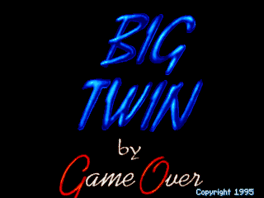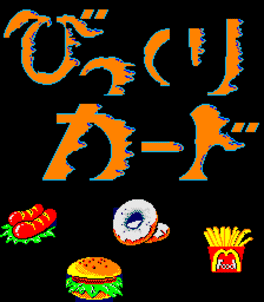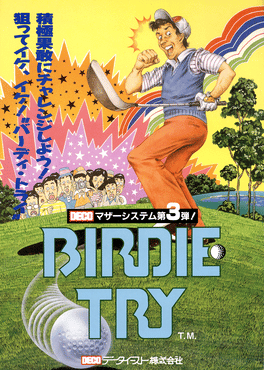Most Popular Arcade Games - Page 138
-
Pac-Manic Miner Man
2013
Pac-Manic Miner Man
2013
Pac-Manic Miner Man was written in 2012 by Jim Bagley to run the classic ZX Spectrum Game Manic Miner on Pac-Man Arcade hardware, a long time ambition of his was to write an arcade game on arcade hardware but little did he know he would eventually write a game that would run on Pac-Man hardware. After finding the memory map for Pac-Man he decided the opportunity was too good to miss and as a tribute to the classic ZX Spectrum game he wrote Pac-Manic Miner Man as it fit the constraints of the hardware. -
China Town
1991
China Town
1991
A Japan-exclusive falling-block tile-matching puzzle arcade game by Data East, where players form melds of mahjong tiles and attempt to form high-scoring mahjong hands. -
Chuugokuryuu II
1997
Chuugokuryuu II
1997
A solitaire mahjong game where the object is to match 3 of a kind, using a limited amount of tiles. This game is known in China as "Zhong Guo Long 2" and in Japan as "Chuugoku Ryuu II" (translated from Japanese as 'China Dragon II'). -
Athena No Hatena?
1993
-
Atlantic City Action
1983
Atlantic City Action
1983
A one or two player casino game published and developed by Epos Corporation in 1983. -
Atomic Boy
1984
Atomic Boy
1984
A platform game where you must climb around lattice of pipes to deactivate power switches for main computer while avoiding robots. Jump on generators to send out disrupters and kill robots. -
Sengeki Striker
1997
Sengeki Striker
1997
Sengeki Striker (閃激ストライカー) is a vertically scrolling shooter created by Warashi and Kaneko for the arcade and released in 1997. The scoring system of Sengeki Striker is not well-understood. It is known that destroying enemy ships so that the explosion takes out other enemies, and using the Gambits to destroy targets, are worth points. Sengeki Striker bears some visual resemblance to Shienryu, a previous game by Warashi. -
Sel Feena
1991
Sel Feena
1991
At a time when people were being terrorized by monsters, Selfeena, a little witch, wizard, and magic creature and her little dragon Rich Rich embarked on an adventure to reclaim the treasure stolen from the people by the monsters. Their weapon was the power to put the monsters in boxes. How much treasure can Selfeena recover? -
Balloon Brothers
1992
Balloon Brothers
1992
A puzzle game similar to "Tetris" but with different colored balloons in different shapes. Instead of falling blocks, the balloons float to the top. Completing a full row across will make that row disappear. -
Adventure Quiz: Capcom World
1989
This is a adventure game by rolling dice to advance and answer quiz. -
Agent Super Bond
1985
Agent Super Bond
1985
Agent Super Bond is a shooter game like the 007 series games. You have to shoot at objects and people that try to attack you, and find specific objects to complete the level. This game also has very similar spirtes to the Galaxian hardware shoot-em-up know as Lost Tomb. -
Angel Kids
1988
Angel Kids
1988
Players control two flying children holding a rope. Pulling the two joysticks outwards, tightens the rope, and throws a third child into the air. The bouncing child can hit balloons, which reveal items when popped. She then falls, and the players must move the angelic children with the rope beneath the falling child to allow her to bounce again. -
Beastie Feastie
1983
Beastie Feastie
1983
A clone of the Glob. A simple platform game where the player guides Toby (a strange blue "glob") through corridors, up and down the elevators and through the side tunnels in his search for snacks. An assortment of animals relentlessly pursue Toby and fight him for control of the elevators. The player must avoid or stop them and eat a dozen different snacks to clear the 24 levels. A time limit increases the difficulty of the game. -
Big Twin
1995
Big Twin
1995
Big Twin is a simple arcade puzzle game in which different coloured spheres continually drop down into the playfield and must be removed as quickly as possible. This is achieved by aligning three or more of the same colour, either vertically, horizontally or diagonally. Once a sphere has completed its drop into the playfield - and providing it's not blocked in by another sphere - it can be highlighted and dragged to another position. As with several other Playmark games, Big Twin is of an adult nature and as the player removes the spheres, a picture of a naked woman is gradually revealed. The game ends if the stacked spheres reach the top of the playfield. -
Bikkuri Card
1987
-
Birdie Try
1988
-
Birdiy
1983
-
Bishi Bashi Championship Mini Game Senshuken
1996
A collection of mini games that can support up to 3 players using red, green and blue buttons. -
Black Dragon
1987
Black Dragon
1987
In the history, there was a 3 dragons came from the sky with lightning to destroyed a kingdom. After suffered the darkness for a long time, a new hero was burn to conquest the dragons.

